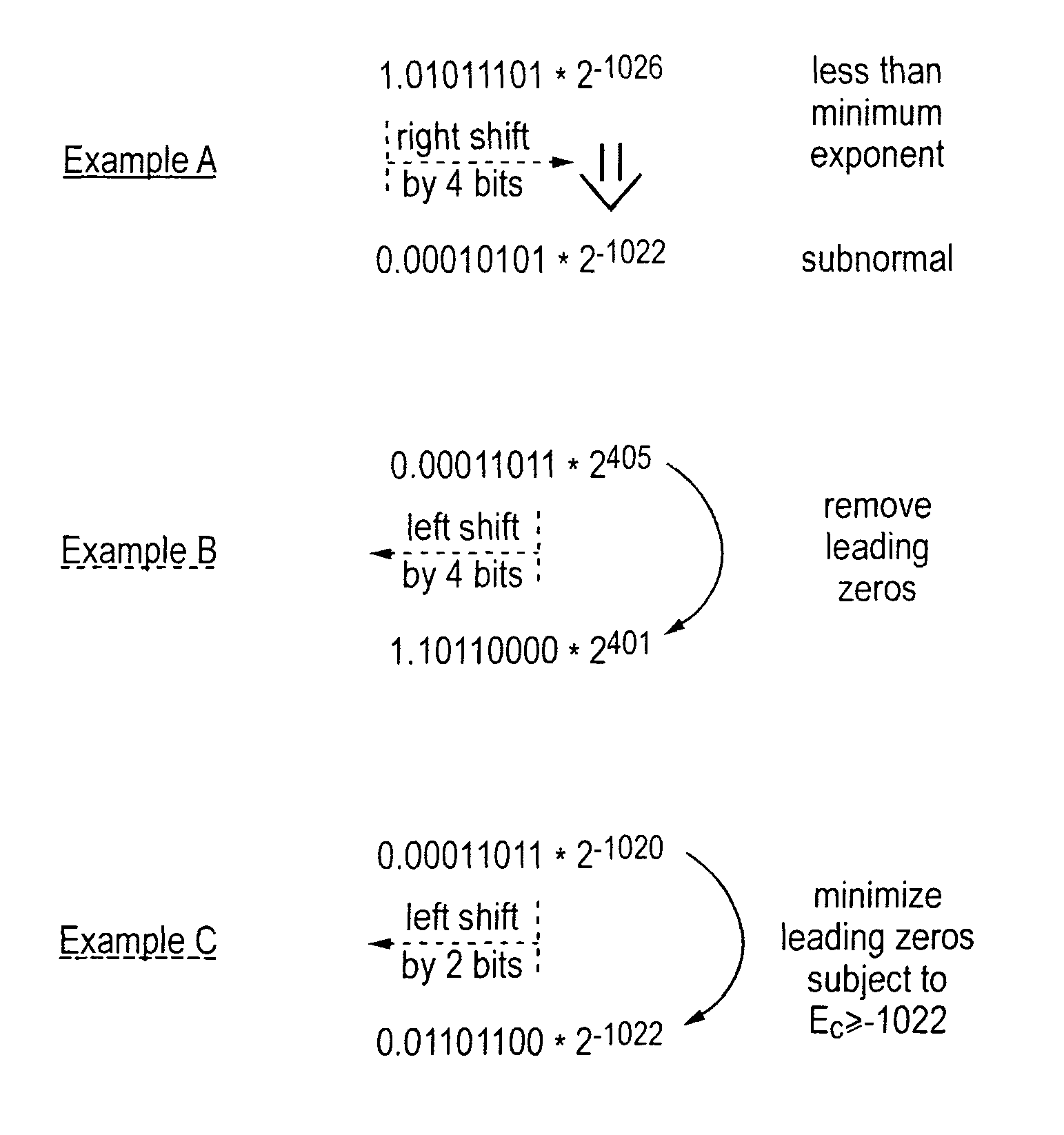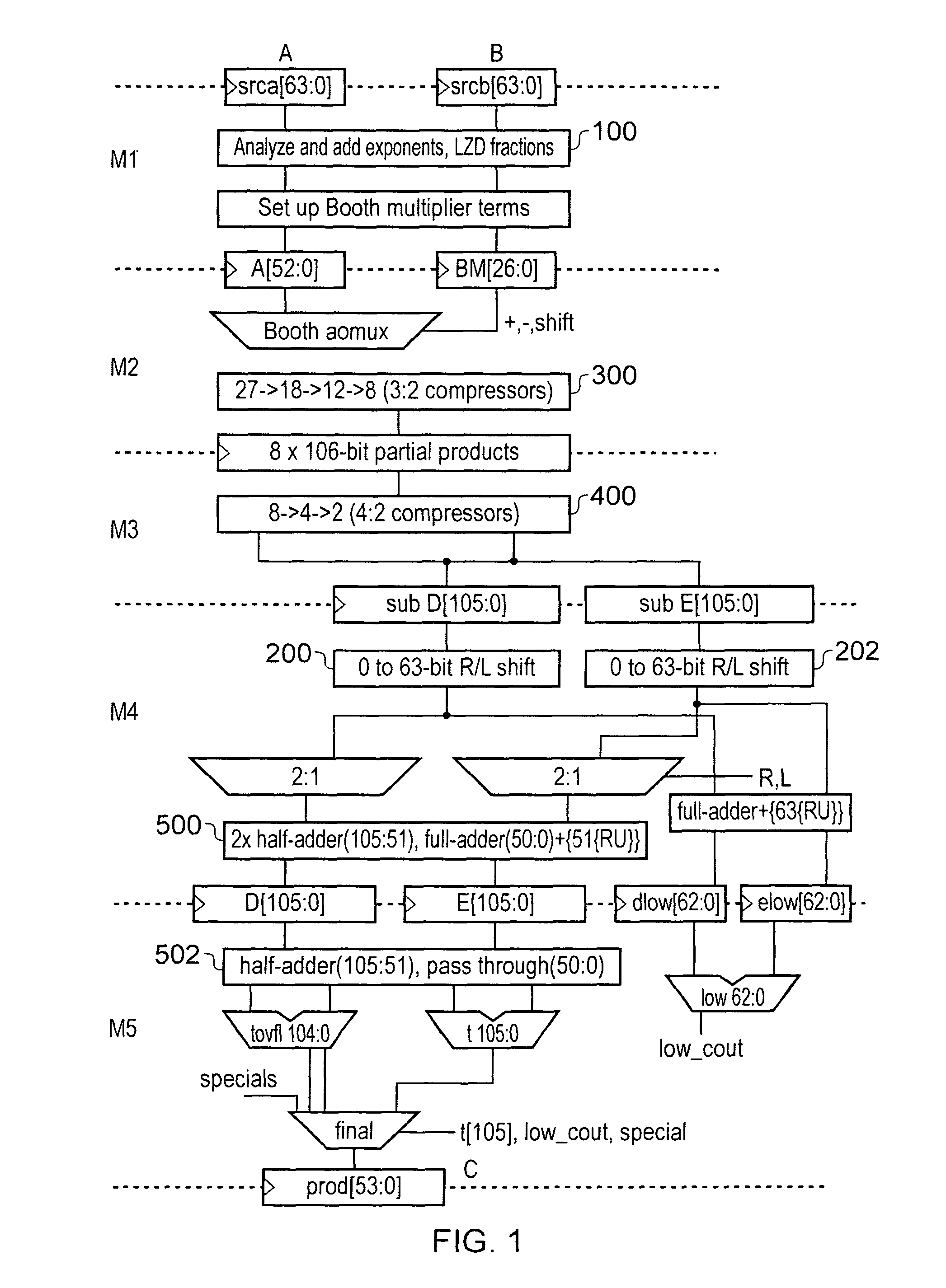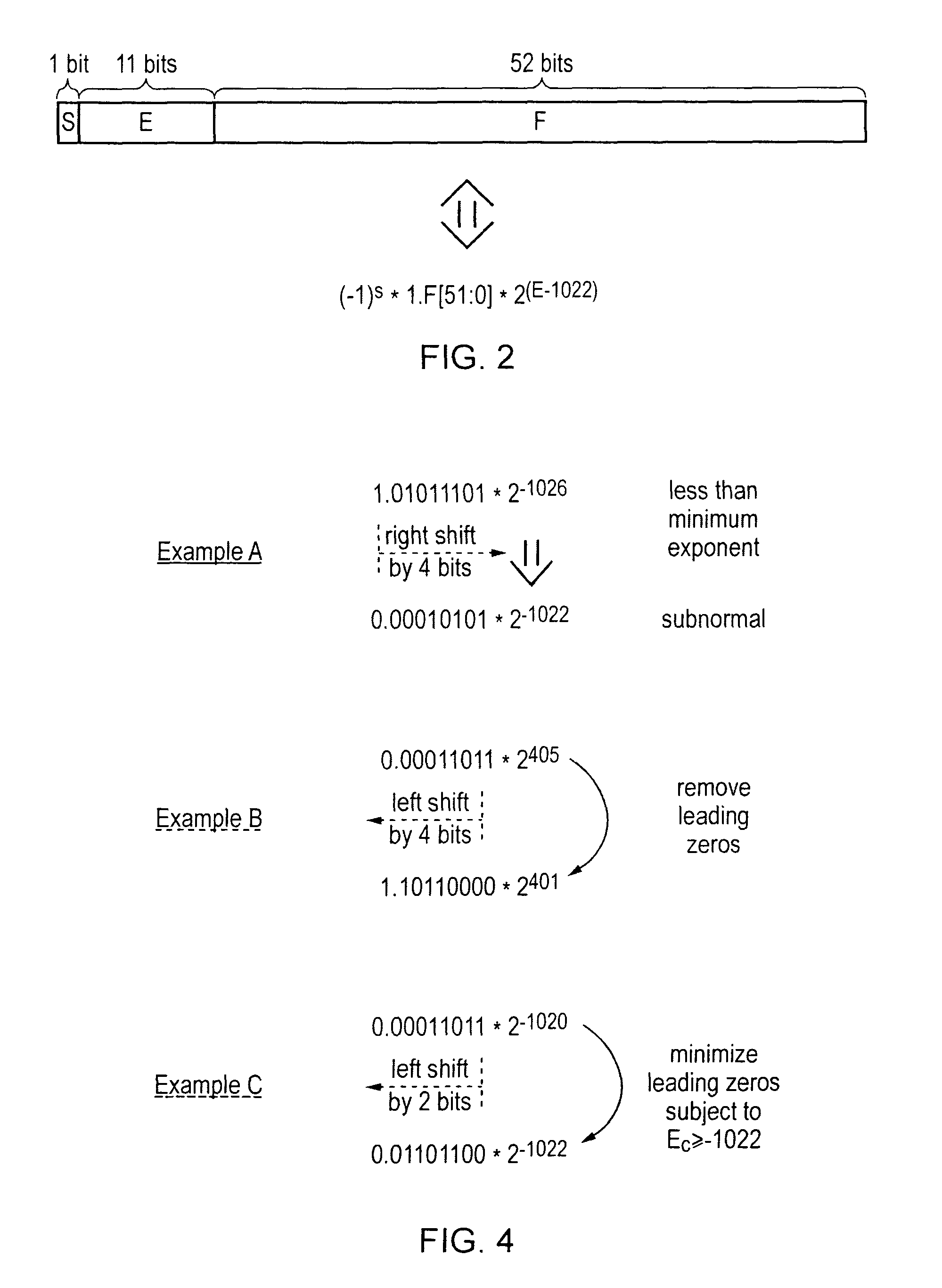Floating point multiplier with first and second partial product shifting circuitry for result alignment
a technology of product shifting circuitry and floating point multiplier, which is applied in the field of data processing systems, can solve the problems of low performance solution, undesirable additional hardware and delay, and the output of the adder from the two partial products is unlikely to be properly aligned for rounding, so as to achieve the effect of reducing the number of leading zeros
- Summary
- Abstract
- Description
- Claims
- Application Information
AI Technical Summary
Benefits of technology
Problems solved by technology
Method used
Image
Examples
example b
[0058]Example B of FIG. 4 illustrates a result value generated when one of the input operand A and the input operand B is subnormal. In this case the result significand first calculated would be subnormal. Providing the limit on the minimum size of the exponent of the result C will not be exceeded then these leading zeros can be removed and the significand returned to a normal value by left shifting four bit positions. This is illustrated in FIG. 4 The bit values shifted in to the significand as it is left shifted may be taken from the low order portion of the effectively 106-bit result which is calculated as discussed above.
example c
[0059 of FIG. 4 illustrates a situation similar to that of Example B except that in this case the exponent value is close to the minimum exponent value and accordingly only a left shift of two bit positions is permitted in order that the minimum exponent value limit is not breached.
[0060]FIG. 5 is a flow diagram schematically illustrating the operation of the circuit of FIG. 1. At step 1100 the shift value determining circuitry adds the exponents EA and EB of the input operand A and the input operand B to provide an initial value of the result exponent EC. At step 1102 the shift value determining circuitry counts the number of leading zeros in the fractional values FA and FB of the input operands A and B. At step 1104 the multiplier calculates the plurality of partial products. At step 1106 the reducing circuitry comprised of 3:2 compressors 300 and 4:2 compressors 400 reduces the plurality of partial products down to a first partial product D and a second partial product E.
[0061]At...
PUM
 Login to View More
Login to View More Abstract
Description
Claims
Application Information
 Login to View More
Login to View More - R&D
- Intellectual Property
- Life Sciences
- Materials
- Tech Scout
- Unparalleled Data Quality
- Higher Quality Content
- 60% Fewer Hallucinations
Browse by: Latest US Patents, China's latest patents, Technical Efficacy Thesaurus, Application Domain, Technology Topic, Popular Technical Reports.
© 2025 PatSnap. All rights reserved.Legal|Privacy policy|Modern Slavery Act Transparency Statement|Sitemap|About US| Contact US: help@patsnap.com



